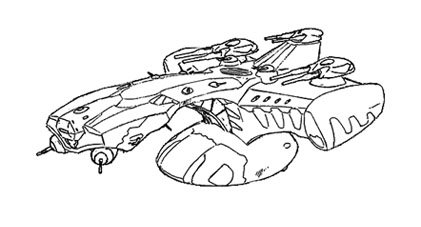|
Laurasia
Unit
type: frigate While the space colonies of Cloud Nine organized a military force known as the Space Revolutionary Army, PLANT did not develop any such organs until much later when the Zodiac Alliance of Freedom Treaty, or ZAFT, was formally chartered. With their more efficient yet less developed technological base, PLANT opted for development of relatively small but highly effective space warships that would be well-suited for mass production and capable of fielding mobile suits as an intrinsic design feature. The Laurasia is the first of the standardized space combatants developed for ZAFT's use, and while a very advanced design in its own right, showcases a number of interesting "features" that highlight the ship as a product of an infant military. The unusual shape of the hull was a deliberate choice by ZAFT to offer a high degree of compartmentalization, making the vessel theoretically safer in the event of major damage. The bridge and crew living quarters are housed far in the front, while almost all the major weapon systems are installed at the exact opposite end, with the reactors, power systems, and fuel supplies taking up the remaining space in the significantly larger aft portions. The Laurasia's mobile suit hangar almost seems like an afterthought, occupying a bulbous pod that hangs below the aft hull and containing a single collapsible "linear catapult" common to all ZAFT mobile suit-bearing ships. The pod itself can actually be physically detached from the Laurasia's hull, and is rated to survive atmospheric re-entry unassisted, leading some analysts to speculate as to whether or not PLANT's plans in arming themselves were always aimed at invading Earth at some point. In addition, the hangar pod can also be used as a method for the crew to evacuate a crippled ship, a somewhat more comforting prospect than donning a space suit and leaping into the void. A half-dozen mobile suits can be stored in the pod and launched in rapid succession, although recovering them in combat is somewhat of a task due to the position of the hangar's entry port directly below the vessel's main axis. Succeeded in terms of capability by the newer Nazca, the Laurasia was on its way to retirement already when many were sunk during the final battles of the Space War in UC 223. With no need for its ability to assist with orbital drop operations, the postwar PLANT National Guard finally withdrew most of the ships from any major service, with many of the surviving ships being scrapped or sold off as surplus. At least a handful still exist in operational use, primarily in the hands of renegade operators who've come into possession of the ships through some order of events, where their compact size and high degree of firepower makes them attractive for a variety of reasons. |




